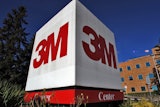When the Dow/DuPont merger was announced in December, it didn’t take long before it became clear that the deal would have a major impact on the companies’ workers. Shortly after the announcement, DuPont revealed that it would be cutting about 1,700 of its 6,000 employees. Among those being laid off were hundreds of researchers at DuPont’s famed Central Research and Development organization (CRD).
Housed inside DuPont’s Experimental Station in Delaware, CRD is the renowned division that birthed some of industrial chemistry’s most important innovations, including Nylon, Kevlar and Tyvek.
One expert I interviewed called the layoffs “almost the death of innovation.”
How has the scientific community responded to the blow?
Losing and Rebounding
According to a recent report in Scientific American, the losses have “sent a chill” through the state’s scientific community.
On the one hand, many of the employees who were laid off have found new positions. According to a representative to the state’s governor, of the 600 to 700 laid off researchers, scientists and other technical staff, about 450 have found new positions in the area.
He also speculated that about 50 to 75 people have taken their chemical expertise and are in various stages of launching their own start-ups. They’re not all likely to be successful, but these new ventures could provide new opportunities for scientists in the area.
DuPont has also begun renting space inside the Experimental Station to third-party companies to use “at a reasonable cost.” So, while DuPont’s work may be taking a hit, the center will hopefully still be a hotbed of innovation and research.
But on the other hand, the R&D community is feeling the loss of DuPont’s engineers.
“I’ve heard from chemical engineering faculty from all over the country who are really distressed about what has happened at DuPont,” a professor at the University of Delaware’s Department of Chemical and Biomolecular Engineering told Scientific American.
Looking Ahead
The report compared the Dow/DuPont deal to a wave of mergers that crippled pharmaceutical industry research in New Jersey between 2004 and 2014. During that time, job losses and the closure of prominent research labs hit the scientific community hard. But some of those science jobs are now coming back thanks to new partnerships and research buildings awaiting redevelopment.
Amid its planned layoffs, DuPont also sought to reassure the community that it still plans to be a leading investor in industrial R&D and that it is committed to scientific innovation.
“At various times, the balance of business-centered innovation and corporately funded research, our emphasis on inventing versus acquiring new science, and our approach to designing and building our manufacturing assets ourselves versus engaging external capabilities, have all shifted in light of the different realities of our competitive environment and the need to renew our direction,” a DuPont executive said in a memo to employees in January.
Experts have also speculated that while Dow and DuPont may be eliminating jobs in the short term, if the merger is successful in the long-run, it will lead to the company’s growth and thus, more jobs.
While it remains unknown if any jobs will come back to the company’s scientific arm and what the long-term ramifications of losing CRD researchers will be, it seems that for now, the scientific community may be down but is definitely not out.
Have you been impacted by layoffs at DuPont and want to share your story? Please get in touch: [email protected].























